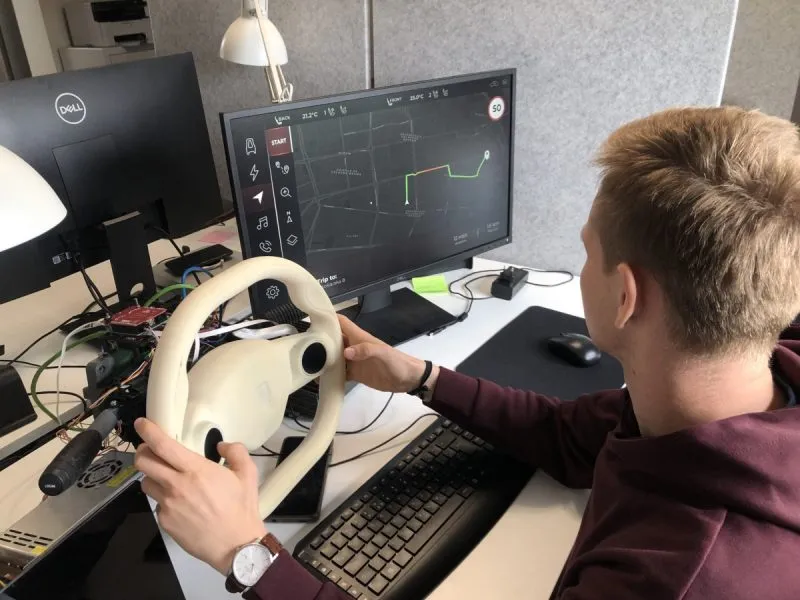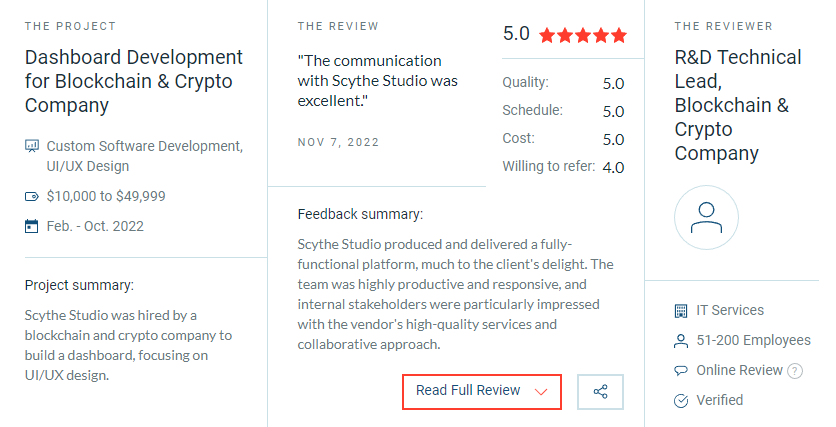Qt Automotive cockpit − case study
The automotive cockpit for the revolutionary and innovative electric vehicle was another project we helped our customers with. Using Qt we developed an automotive cockpit. The designed cockpit consisted of three independent displays presenting the driver with critical information like a speedometer, warning icons, and other IVI features.
Technologies used
Meet the client
Cloud Best is a leading Polish company operating within industries such as fintech, blockchain, and crypto. Moreover, they invest in innovative R&D projects including those from the Automotive sector and because of that requested the need to develop Qt Automotive cockpit. Cloud Best has a thriving branch offering complex R&D services including building the electric car of the future from scratch.
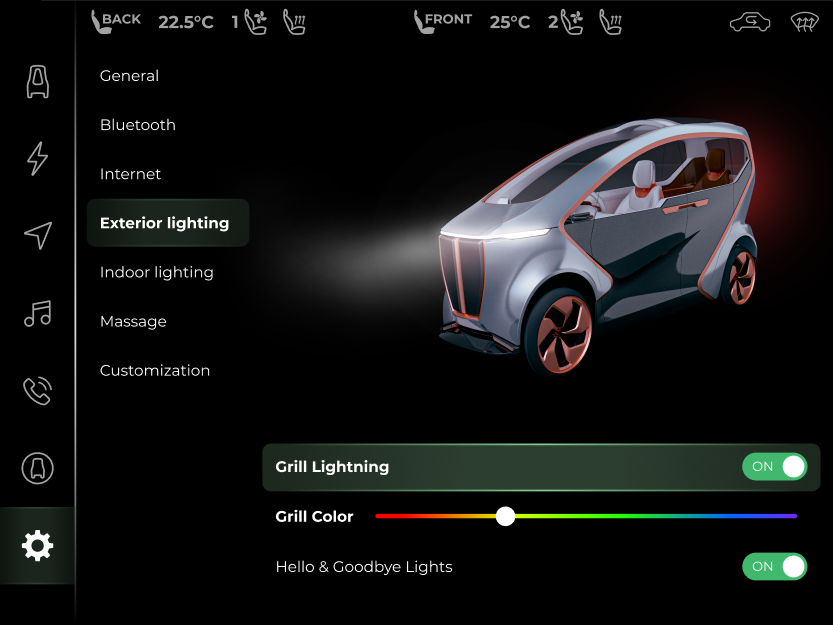
The need to have Qt Automotive cockpit
Qt framework, backed up by The Qt Company, has multiple advantages and characteristics that make it a great technology for automotive software. Market-leading producers from the Automotive industry base their in-vehicle infotainment systems on it. As a result, you can find a digital cockpit developed using Qt in your Tesla, Mercedes, or Koenigsegg car.
Our client decided to base HMI for their car brand on the Qt framework too. What were the exact reasons? It is all about what Qt has to offer regarding modules, tools, development process, and characteristics.
Qt offering for the Automotive industry
First, let’s focus on what you can find in the framework. We will focus on the modules, tools, and libraries that are part of Qt.
Qt Automotive Suite
Let’s face it. Digital cockpit is not a standard Qt application. There are often many systems in the vehicle. Cockpits are usually deployed on embedded platforms. Moreover, there is a long list of security requirements that software has to meet.
Because of those specific requirements, The Qt Company came up with Qt Automotive Suite which is a set of extra modules and tools. In the suite, you can find solutions like Qt Application Manager, Qt IVI, Qt Safe Renderer, and much more.
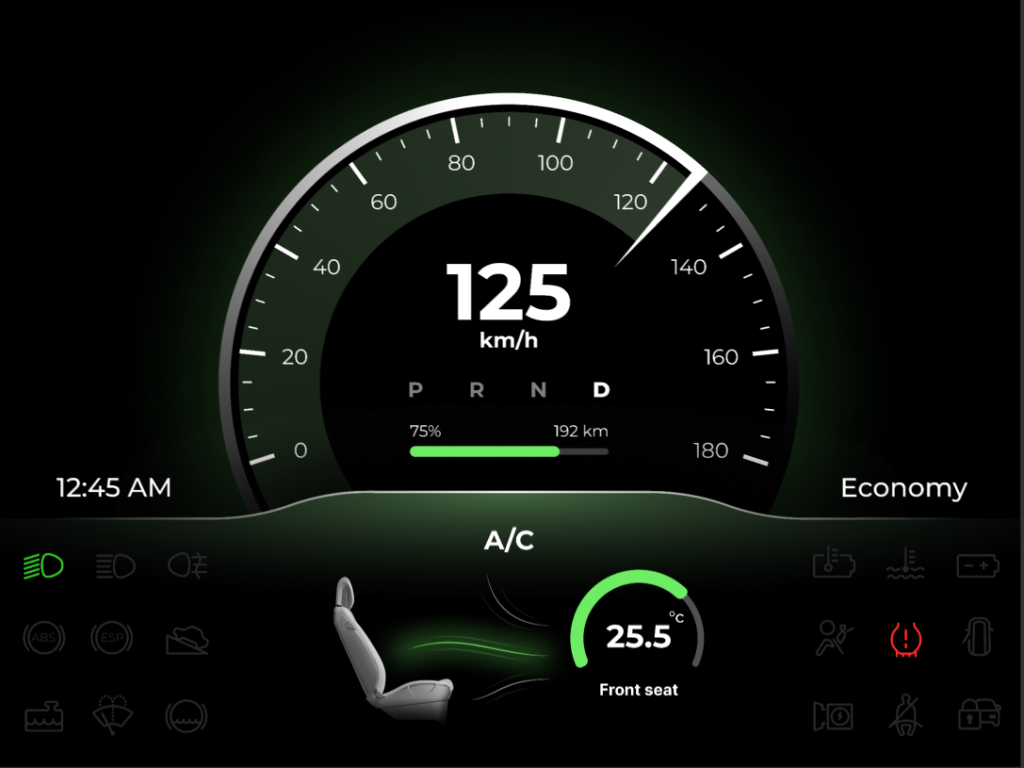
Rich UI development
With Qt, it is easy to develop HMI applications with advanced UI for any operating system. Qt goes with QML language and Qt Quick module allowing developers convenient implementation of visual effects as well as introducing 3D elements. The latter are currently quite popular. Rich UI is a great way to amaze software users.
There is also Qt Design Studio software that provides a bridge between UX/UI designers and software developers. Using it you can quickly convert Figma projects to QML code.
Easy Connectivity implementation for developers
Qt has multiple modules and classes making it easy to develop various inter-systems communication interfaces. Modules like Qt Network, Qt Serial Port, Qt CAN Bus, Qt MQTT, and Qt Bluetooth make a significant difference in reducing time-to-market.
That is because your developers can use the interfaces and methods that are already familiar to them. Without a need to look for additional, third-party libraries. With Qt you can implement most of your connectivity features.
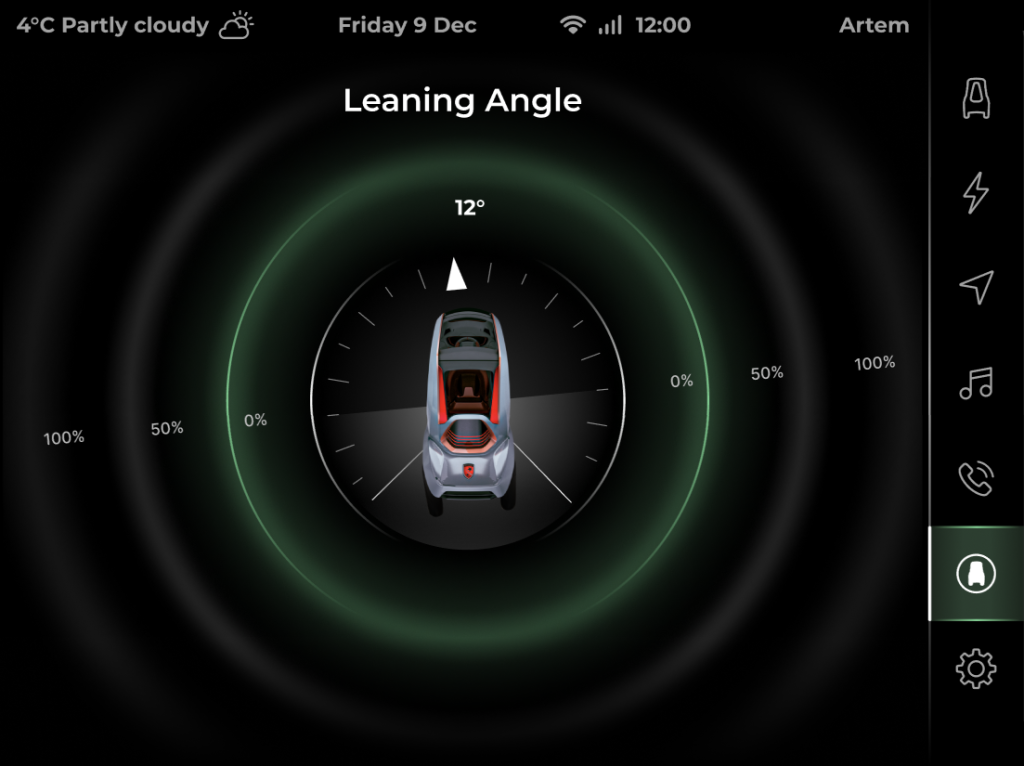
Key characteristics of Qt for the Automotive industry
Now let’s focus on what are the key characteristics that make a difference for Automotive software development teams.
Unique development flow and tools
Qt goes with a unique way of developing the HMI of the future. It is a technology that provides a full package of software solutions for developers, but also a complete bundle for other roles like designers or translators.
There is a Qt Design Studio for designers and Qt Linguist for translators. You can limit the number of dependencies and base your entire HMI development on Qt framework.
Qt is cross-platform
This characteristic matters a lot for this project. The customer wasn’t sure about the exact hardware platform for the software. Therefore, the fact that Qt supports so many various operating systems and hardware platforms made a huge difference. Our team could focus on in-vehicle infotainment software creation while keeping an open door for selection of a target hardware platform.
Qt is mature
For car manufacturers, choosing a mature technology is crucial. The average car remains in use for several years or even longer. The Qt framework exists on the market for quite a long time – it is a technology that is both well-known and trusted by companies developing various vehicles. The Qt Company also offers Long Term Support versions of their software.
Scythe Studio on the project
The vehicle developed by our client had three independent screens placed behind the steering wheel. Our Qt QML development services consisted of implementing the UI for those screens as well as coding and implementing the interfaces for inter-system communication. We have been provided with the necessary electronics, embedded platform, screens, and steering wheel.
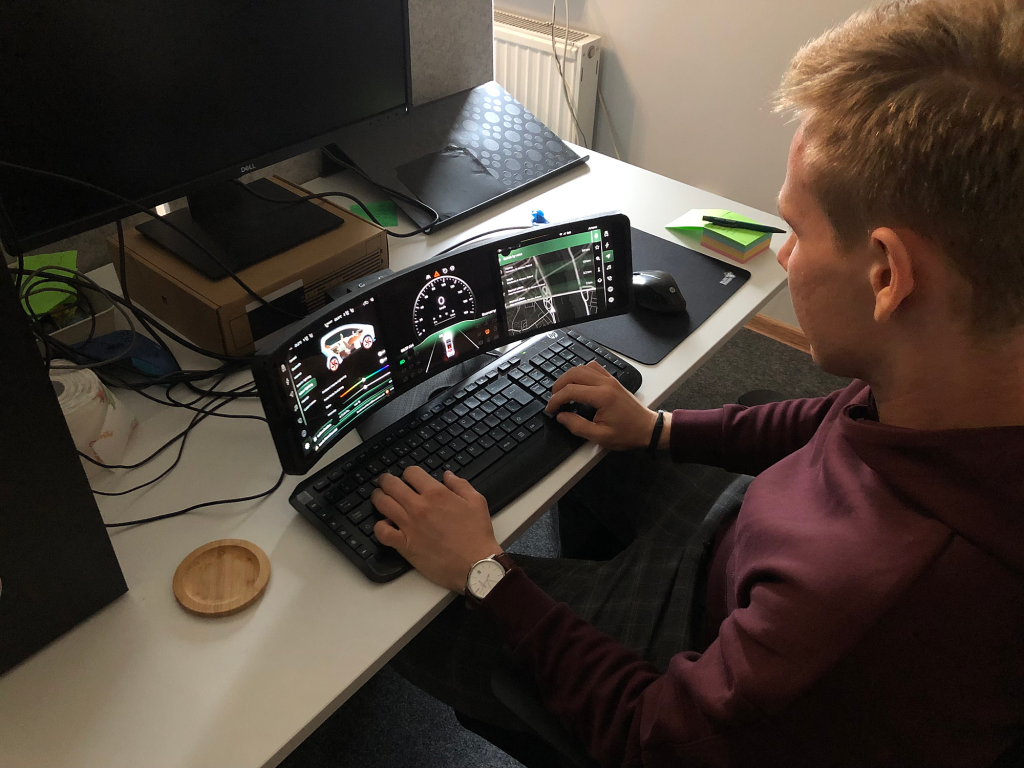
Thanks to the fact that Scythe Studio has access to specialists with a niche skill set we could first help create the prototype of the project fast. We were able to complete all of the milestones required for the software to be actually placed in the car in expected schedule.
We are proud of the fact that we could help make this project real and that we could launch the project shortly after receiving the request. Scythe Studio’s software developers squad consisted of several engineers and an experienced team leader.
Customer’s review
In appreciation of our work, we have received testimony on Scythe Studio Clutch profile. Experienced lead and owner of the project from customer’s side shared his thoughts on the cooperation with us on the project.
Do not hesitate to contact us if you are looking to accelerate your project with skilled Qt QML developers. The easiest way to contact us is by filling out this contact form.
In the future, we plan to expand our services with electronics and low-level embedded development to be able to deliver complete HMI solutions.
Recent projects
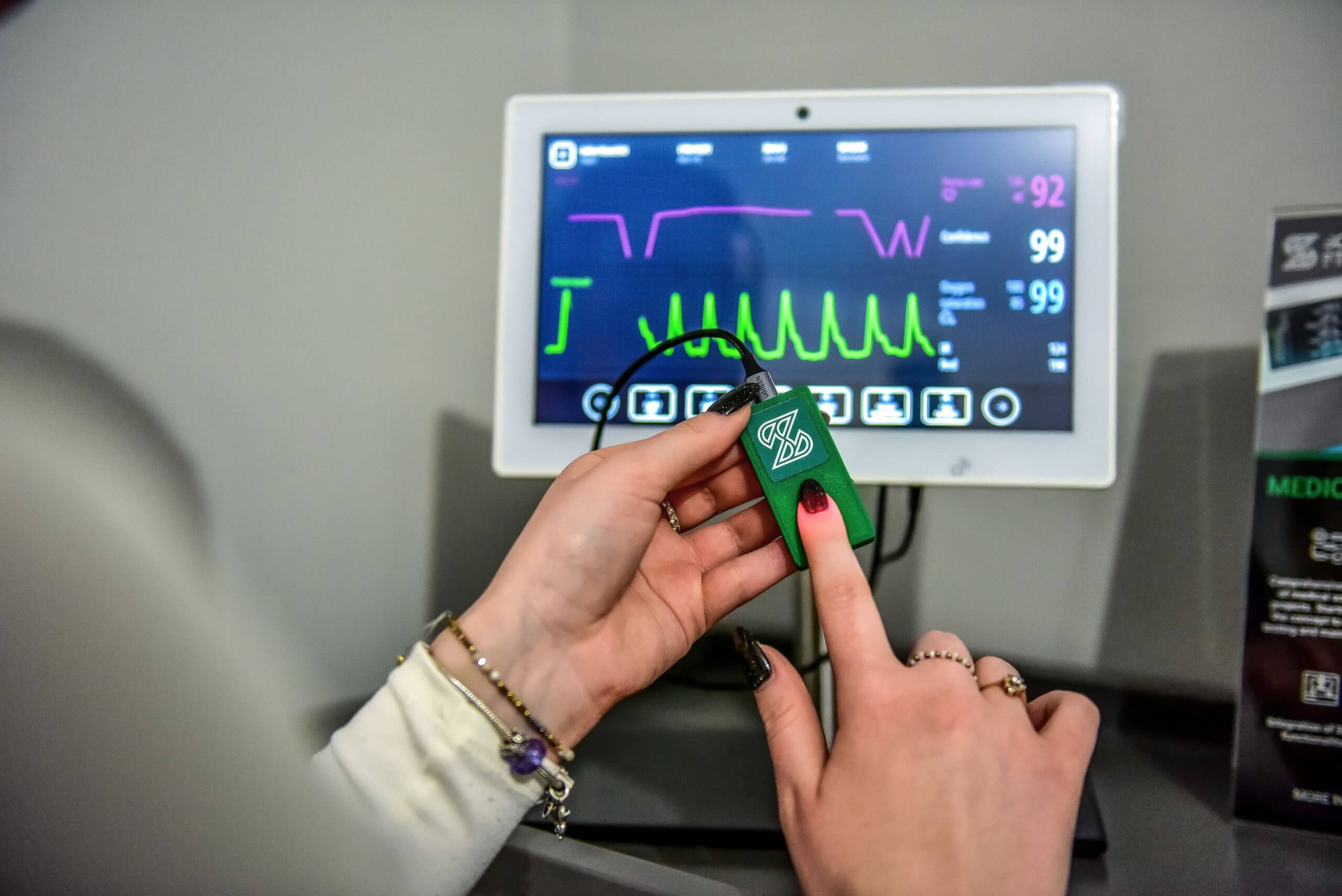
Patients Vital Parameters Monitor
The patient vital signs monitor features a pulse oximeter and heart rate sensor. It consists of a sensor and a microcontroller. It communicates with the sensor, gets data from it and sends it via a USB cable to a computer.
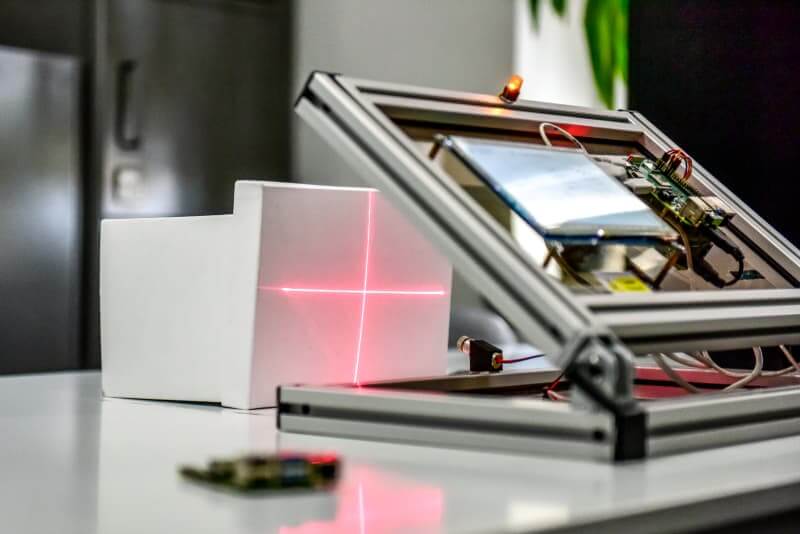
Embedded Application for Medical Laser Device
Application that works on embedded device and it purpose is to simulate the operation of a medical laser. The user can select one of the pre-prepared operations, or create their own with pre-set parameters. The application simulates the course of the procedure.

Robot Software – Digital Twin project
Cross-platform application designed to communicate with and control the Dobot Magician robotic arm. The operation of the robotic arm, is also assisted by a 3D model fully reflecting the position and alignment in real time of the physical model.
